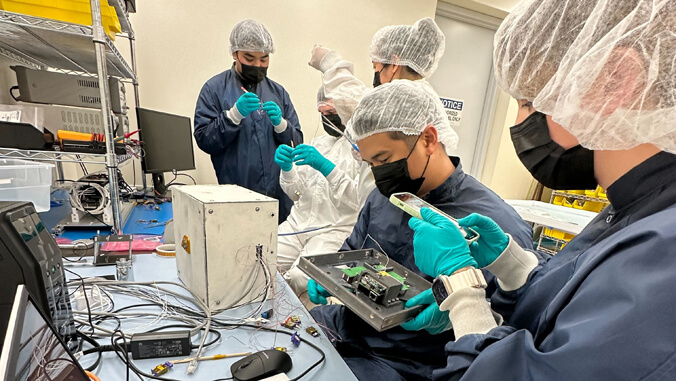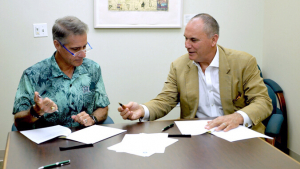
The University of Hawaiʻi at Mānoa and the Missile Defense Advocacy Alliance (MDAA) have entered into a Memorandum of Understanding (MOU) to cooperate in the field of space sciences, which can include space-based observations looking down on the Earth, particularly over the Pacific region, as well as looking at the stars and other planets.
“This program is one important step toward making Hawaiʻi the nation’s center for space-based observation of the Pacific,” said UH Mānoa Provost Michael Bruno. “There is a real need to better understand what’s going on in the Pacific. It’s this vast domain that is impossible to monitor, especially from the ground. You really have to begin to monitor from space.”

The MOU is effective for three years with both institutions committing to faculty, scholar and student exchanges; sharing academic information, materials and publications; joint research programs; conferences and other student initiatives. The agreement also prioritizes autonomy and financial independence.
MDAA is a non-partisan, non-profit organization that advocates for the development of missile defense systems. They also advocate for multi-use platforms that can make critical Earth observations for civilian needs.
The development of this new program will involve UH Mānoa’s School of Ocean and Earth Science and Technology, the College of Engineering, the College of Natural Sciences and the Institute for Astronomy (IfA).
- Related UH News story: Space-bound payload tested by UH Hawaiʻi Space Flight Lab team, October 27, 2023
“I think a critical need is to connect our leading-edge research to education, and that is a big part of what this program is going to seek to do,” said Bruno.
The MOU will further incorporate a variety of technology development programs at UH, and space research that is being conducted across different units at UH, to enhance Hawaiʻi’s ability to monitor the Pacific region.
“Instead of looking up, it’s going to look down with sensors to pick up the ability to see the entire Pacific, which we have not done in the history of mankind,” said Riki Ellison, MDAA chairman and founder. “This will be the first time that we will be able to see everything around us in the Pacific, whether it’s movements of fish, ships, planes, agriculture, everything.”
UH also announced in January 2024 that it is in the initial stages of establishing a space engineering and instrument development center, a joint initiative between the UH Mānoa College of Engineering, IfA and UH Hilo.

